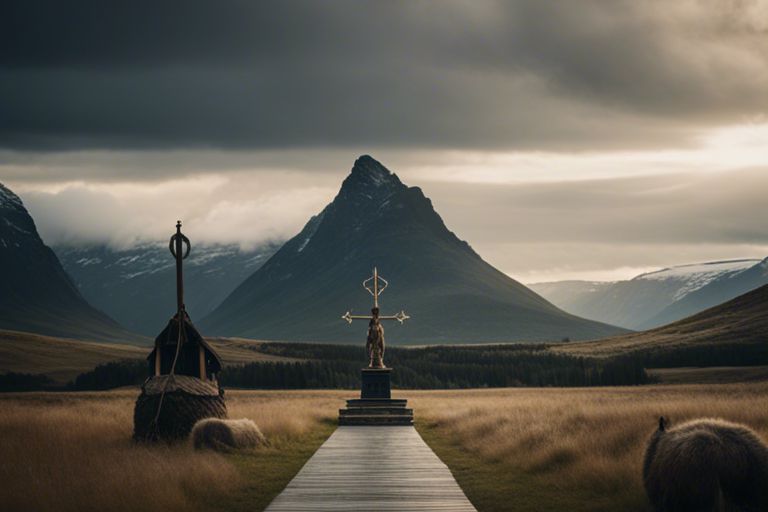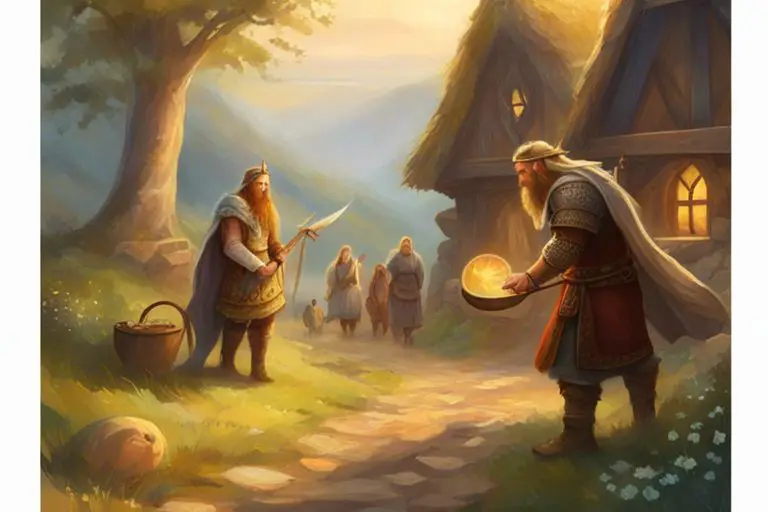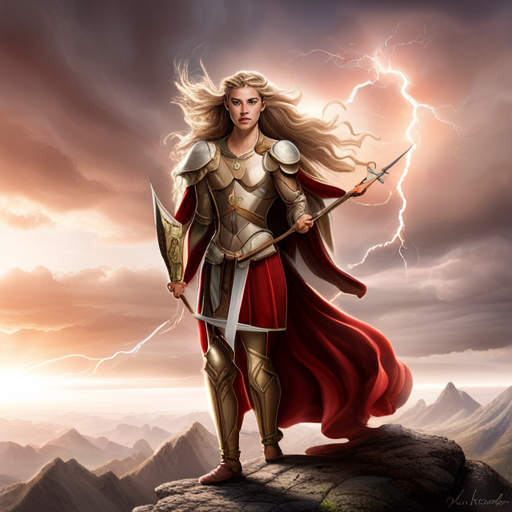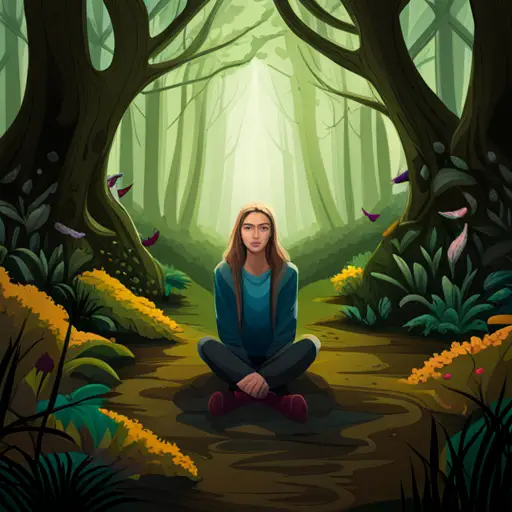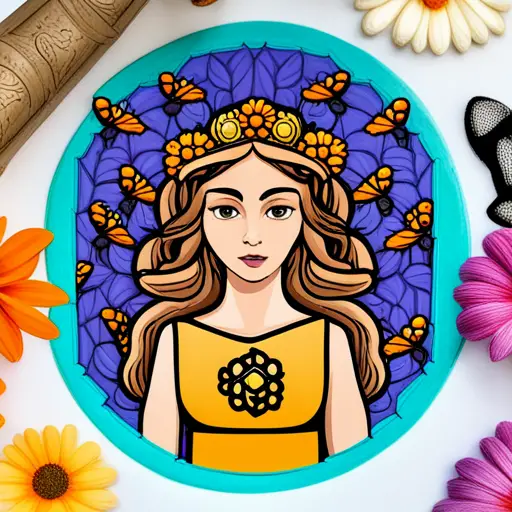As you research into Viking culture, you’ll discover a world where gods and goddesses walked among mortals, where mythological creatures roamed the land and sea, and where the fabric of reality was woven with magic and wonder. In this fascinating world, the gods of Asgard held sway, their powers shaping the destinies of humans and giants alike. But what drove the Vikings to believe in these fantastical beings? What secrets lay hidden behind the myths of Odin, Thor, and Freyja? As you initiate on this journey, get ready to uncover the mysteries of Viking faith and beliefs, and discover the enduring allure of a world where myth and reality blurred.
Key Takeaways:
- Norse Pantheon: The Vikings believed in a complex pantheon of gods and goddesses, including Odin, the All-Father, Thor, the god of thunder, and Frigg, the goddess of love and fertility. These deities were believed to influence various aspects of life, such as war, agriculture, and family.
- Cosmology and the Nine Worlds: Viking mythology described the universe as consisting of Nine Worlds, each with its own unique characteristics and inhabitants. The most important of these worlds was Midgard, humans, which was connected to other worlds by the World Tree, Yggdrasil.
- Ragnarök and the Cycle of Life and Death: The Vikings believed in an ongoing cycle of life, death, and rebirth, which was reflected in their mythological stories. The ultimate fate of the gods and humans was Ragnarök, a catastrophic event that would mark the end of the world and its subsequent rebirth.
Overview of Viking Religion
Before plunging into the fascinating world of Viking gods and myths, it’s vital to understand the context and core beliefs of their religion. Viking faith was not a static entity, but rather a complex and dynamic system that evolved over time.
Historical Context
Contextually, the Viking Age (8th-11th centuries) was a time of great change and upheaval in Scandinavia. As the Vikings raided, traded, and settled across Europe, they encountered various cultures and belief systems, which influenced their own religious practices. This syncretism is evident in the blending of indigenous Germanic paganism with elements of Christianity and other foreign beliefs.
Core Beliefs and Values
Historically, Viking religion was deeply rooted in their cultural identity and daily life. At its core, Viking faith was centered around the concept of wyrd, or fate, which governed the lives of gods and mortals alike. This belief in a predetermined destiny instilled a sense of fatalism, but also encouraged Vikings to live life to the fullest and strive for greatness.
Religion played a vital role in Viking society, influencing every aspect of their lives, from warfare and agriculture to art and literature. The Vikings believed in a multiverse, comprising nine interconnected worlds, each with its own unique characteristics and inhabitants. This rich cosmology was populated by a diverse pantheon of gods, goddesses, and supernatural beings, each with their own stories and significance. You’ll encounter these fascinating characters throughout this journey into the world of Viking faith and beliefs.
Major Norse Gods and Goddesses
If you’re familiar with Norse mythology, you know that the Vikings worshipped a pantheon of gods and goddesses, each with their own unique powers and personalities. In this chapter, we’ll research into the lives and stories of some of the most important deities in the Norse universe.
Odin: The All-Father
Majestic and mysterious, Odin is often depicted as a bearded man wearing a wide-brimmed hat and carrying a spear called Gungnir. As the All-Father, he’s the chief god of the Norse pantheon, ruling over wisdom, poetry, war, and magic. He’s known for his cunning and bravery, often venturing into the unknown to seek knowledge and power.
Thor: The God of Thunder
All-powerful and fearless, Thor is the god of thunder, lightning, and strength. He’s often depicted as a muscular man wielding a massive hammer called Mjolnir. This mighty hammer is said to be so powerful that it can level mountains and smash giants.
Norse mythology tells us that Thor is a fierce protector of humanity, defending the gods and mortals alike from the forces of chaos. His incredible strength and unwavering courage make him a beloved hero in Viking lore.
Freyja: The Goddess of Love and Beauty
Majestic and alluring, Freyja is the goddess of love, beauty, fertility, war, and death. She’s often depicted as a stunning woman wearing a necklace called Brisingamen, which grants its wearer incredible beauty and charm. Freyja’s power is so great that she can see into the future and manipulate the fates of men.
Love and desire are Freyja’s domain, and she’s said to weep tears of gold for her lost love, Odr. Her story is one of passion, heartbreak, and the enduring power of love.
Loki: The Trickster God
Thor-like in his mischievous nature, Loki is the god of fire, magic, and mischief. He’s often depicted as a cunning and quick-witted trickster, known for playing pranks on the other gods and causing chaos throughout the nine worlds. Loki’s cleverness is matched only by his treachery, and his actions often have far-reaching and devastating consequences.
For instance, Loki’s trickery led to the death of Baldur, the god of light and purity. This event set in motion a chain of events that would ultimately lead to the downfall of the gods and the end of the world. Loki’s complex and conflicted nature makes him a fascinating and formidable figure in Norse mythology.
Myths and Legends
Your journey into the world of Viking myths and legends begins with the stories that shaped their understanding of the universe and their place within it.
The Creation Story
An ancient giant, Ymir, emerged from the void of Ginnungagap, and from his body, the gods created the world. The earth was formed from his flesh, the mountains from his bones, and the sea from his blood. This primordial landscape was then inhabited by the gods, giants, and other mythical creatures.
The Aesir-Vanir War
Creation itself was not without conflict, as the two groups of gods, the Aesir and Vanir, clashed in a devastating war. The war ended with the unification of the two groups, but not before the earth was scorched and the seas were filled with the blood of the fallen.
Another aspect of this war was the exchange of hostages between the two groups. The Aesir sent Hoenir and Mimir to the Vanir, while the Vanir sent Njord, Frey, and Freya to the Aesir. This exchange ultimately led to the strengthening of the Aesir and the beginning of their reign.
Ragnarok: The End of the World
To the Vikings, the end of the world was not a distant concept, but a catastrophic event that would soon come to pass. Ragnarok, the Twilight of the Gods, would see the destruction of the nine worlds, the death of the gods, and the final battle between good and evil.
Myths foretold of the fire giant Surtur emerging from the south, his flames engulfing the land, while the Midgard Serpent rose from the ocean, encircling the earth. The gods, led by Odin, would march towards their doom, armed with courage and determination. In the end, only a few survivors would remain to rebuild the world.
The Quest for the Golden Armor
The legend of the golden armor of the god Frey is one of greed, betrayal, and tragedy. Frey, the god of fertility and prosperity, traded his sword for the love of a giantess, Gerda. This sacrifice would ultimately lead to his downfall, as he was left defenseless against the fire giant Surtur during Ragnarok.
Legends tell of the craftsmanship of the dwarves, who forged the golden armor, imbuing it with magical powers. The armor was said to grant its wearer invincibility, but at a terrible cost, as it would also bring about their demise.
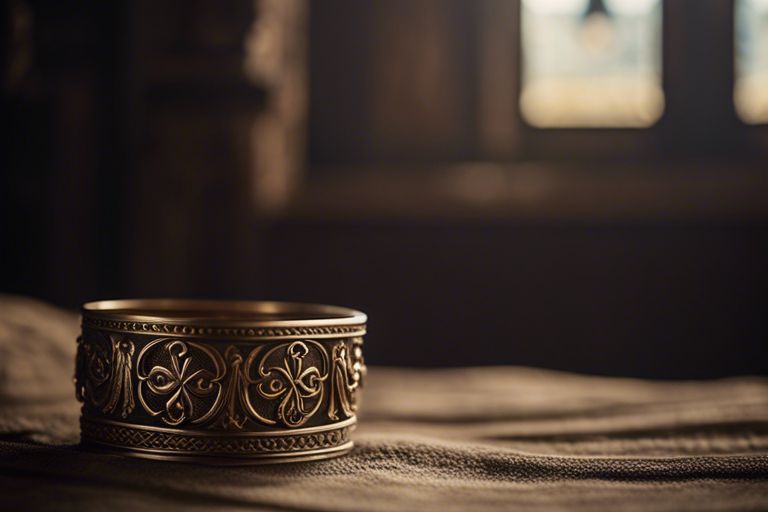
Religious Practices and Rituals
Despite the Vikings’ reputation for pillage and plunder, their religious practices were a vital part of their daily lives. You’ll find that their rituals and ceremonies were deeply rooted in their beliefs and myths, and played a significant role in their social and cultural fabric.
Blót: Offerings to the Gods
Rituals of sacrifice, known as blót, were an important aspect of Viking religious practice. You would offer sacrifices to the gods, often in the form of food, drink, or even animals, in exchange for protection, prosperity, and good fortune.
Yule: The Winter Solstice Festival
Offerings of meat, bread, and ale were made to the gods during Yule, the winter solstice festival. This joyous celebration marked the longest night of the year and the beginning of the sun’s journey back towards the equator.
Gods like Odin, Thor, and Freyja were honored during Yule, and the festival was a time for feasting, singing, and merriment. You would gather with family and friends, exchange gifts, and enjoy the warmth and light of the fire, which symbolized the return of the sun. The Vikings believed that the boundaries between the worlds were at their thinnest during Yule, making it an ideal time for divination and communication with the spirits.
Midsummer: The Summer Solstice Festival
Gods like Baldur and Freyja were celebrated during Midsummer, the summer solstice festival. This festive occasion marked the peak of the sun’s power and the beginning of the harvest season.
Yule’s counterpart, Midsummer was a time for bonfires, feasting, and merriment. You would gather with your community, sing songs, and dance around the fire, which symbolized the power and fertility of the sun. The Vikings believed that the magical powers of the gods were at their strongest during Midsummer, making it an ideal time for love spells, fertility rituals, and divination.
Funeral Rites and Burial Customs
For the Vikings, death was not an end, but a transition to the afterlife. You would honor your deceased loved ones with elaborate funeral rites and burial customs, which often included sacrifices to the gods.
Plus, the Vikings believed that the deceased would need provisions for their journey to the afterlife. You would bury your loved ones with grave goods, such as food, drink, and weapons, to ensure their comfort and safety in the afterlife. The Vikings also believed that the funeral pyre had purifying properties, and that the smoke would carry the deceased’s spirit to the gods.
The Role of Seers and Prophets
Keep in mind that in Viking society, seers and prophets played a crucial role in connecting the mortal world with the gods. These individuals were believed to possess the power to see into the future, communicate with the gods, and interpret omens and signs.
Völvas: Female Seers and Shamans
Seeresses like you, known as völvas, were highly respected and feared in Viking society. These female seers and shamans were believed to possess the power to communicate with the gods, spirits, and the dead. They would often perform rituals and ceremonies to invoke the gods, and their prophecies were sought after by chieftains and warriors alike.
Galdr: Magical Chants and Spells
Shamans like you, skilled in the art of galdr, would weave powerful magical chants and spells to influence the outcome of battles, ensure fertility, and ward off evil spirits. These incantations were believed to hold the power to shape reality itself.
Magical galdr was not just limited to battle cries and war chants. It was a complex system of magic that involved the use of runes, poetry, and music to tap into the power of the gods. Skilled galdr practitioners could summon the fury of Thor, call upon the cunning of Loki, or invoke the wisdom of Odin.
The Importance of Prophecy in Viking Society
On the battlefield, in the halls of the chieftains, and in the hearts of the people, prophecy played a vital role in shaping Viking society. You see, prophecies were not just mere predictions of the future; they were believed to hold the power to shape the course of events themselves.
A well-respected seer or prophet could sway the decisions of chieftains, influence the outcome of battles, and even determine the fate of entire communities. Their prophecies were often shrouded in mystery and ambiguity, making them open to interpretation and manipulation. Yet, their words held the power to inspire courage, foster unity, and ignite the flames of war. In a world where the gods walked among mortals, prophecy was a powerful tool that could tip the balance of power and shape the destiny of nations.
The Impact of Viking Faith on Daily Life
Unlike many modern societies, the Viking faith was deeply intertwined with daily life, influencing every aspect of their culture and society. From agriculture to warfare, family dynamics to social structure, the Vikings’ beliefs played a significant role in shaping their experiences and interactions.
Agriculture and Harvest Festivals
Heaping harvests were a blessing from the gods, and the Vikings celebrated this bounty with grand festivals. You would have witnessed elaborate rituals, where offerings were made to the earth goddess, Jörð, and the fertility god, Freyr, to ensure a prosperous harvest. These celebrations brought communities together, strengthening social bonds and fostering a sense of gratitude for the land’s abundance.
Warfare and Battle Rituals
Viking warriors prepared for battle with rituals and sacrifices, seeking the favor of Odin, the All-Father, and other gods of war. You would have seen them donning sacred armor, adorned with symbols of protection and strength, as they invoked the power of their deities to grant them victory.
It’s fascinating to note that these rituals often involved human sacrifice, a practice deemed necessary to appease the gods and guarantee success in battle. The Vikings believed that the souls of the fallen would ascend to Valhalla, the great hall of the slain, where they would fight alongside the gods in the final battle of Ragnarök.
Family and Social Structure
Rituals and ceremonies marked significant life events, such as births, weddings, and funerals, emphasizing the importance of family and community ties. You would have observed the Vikings gathering around the hearth, sharing stories and offering sacrifices to the gods, as they honored their ancestors and reinforced social bonds.
Warfare played a significant role in shaping Viking family dynamics, as male warriors often spent months or even years away from home, leaving women to manage the household and farms. This led to a unique social structure, where women held considerable power and influence, especially in matters of inheritance and property.
In this chapter, we’ve seen how the Viking faith permeated every aspect of their daily lives, from the cycles of nature to the rhythms of war and family. As you continue to explore the world of Viking mythology, remember that their beliefs were not just abstract concepts, but living, breathing forces that shaped their experiences and interactions.
To wrap up
On the whole, you’ve now commenceed on a thrilling journey through the realms of Viking faith and beliefs, where the boundaries between reality and myth blur like the misty veil of the Nine Worlds. As you’ve investigated into the stories of Odin, Thor, and the rest of the Aesir, you’ve caught glimpses of a rich cultural heritage that still whispers secrets to us today. May the echoes of these ancient tales continue to resonate within you, inspiring your own exploration of the mysteries that lie just beyond the edge of our everyday world.

